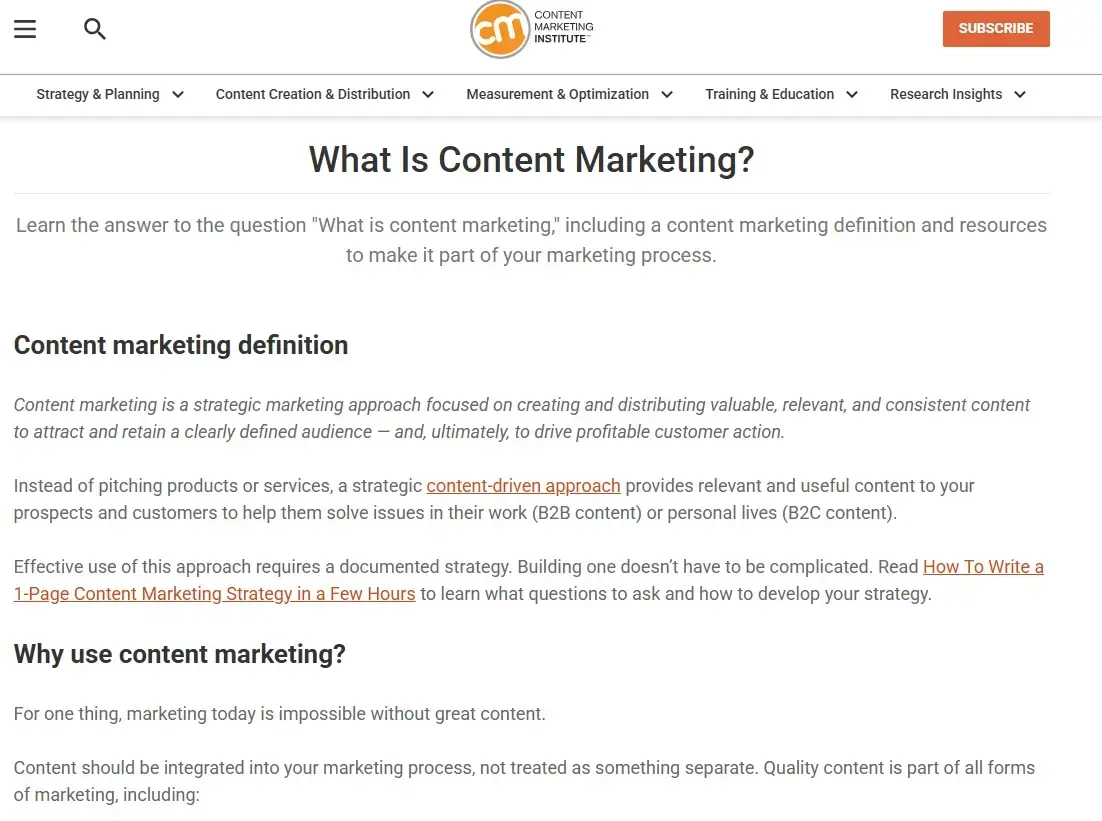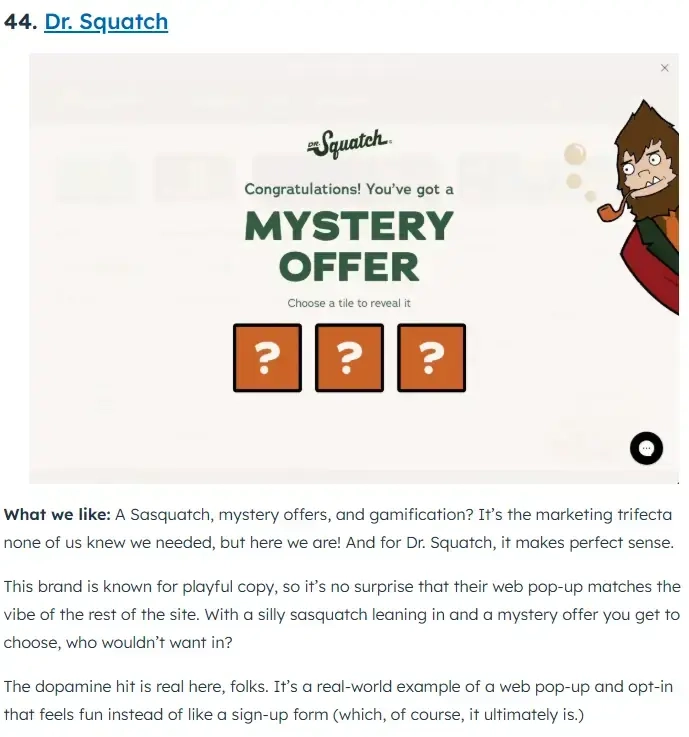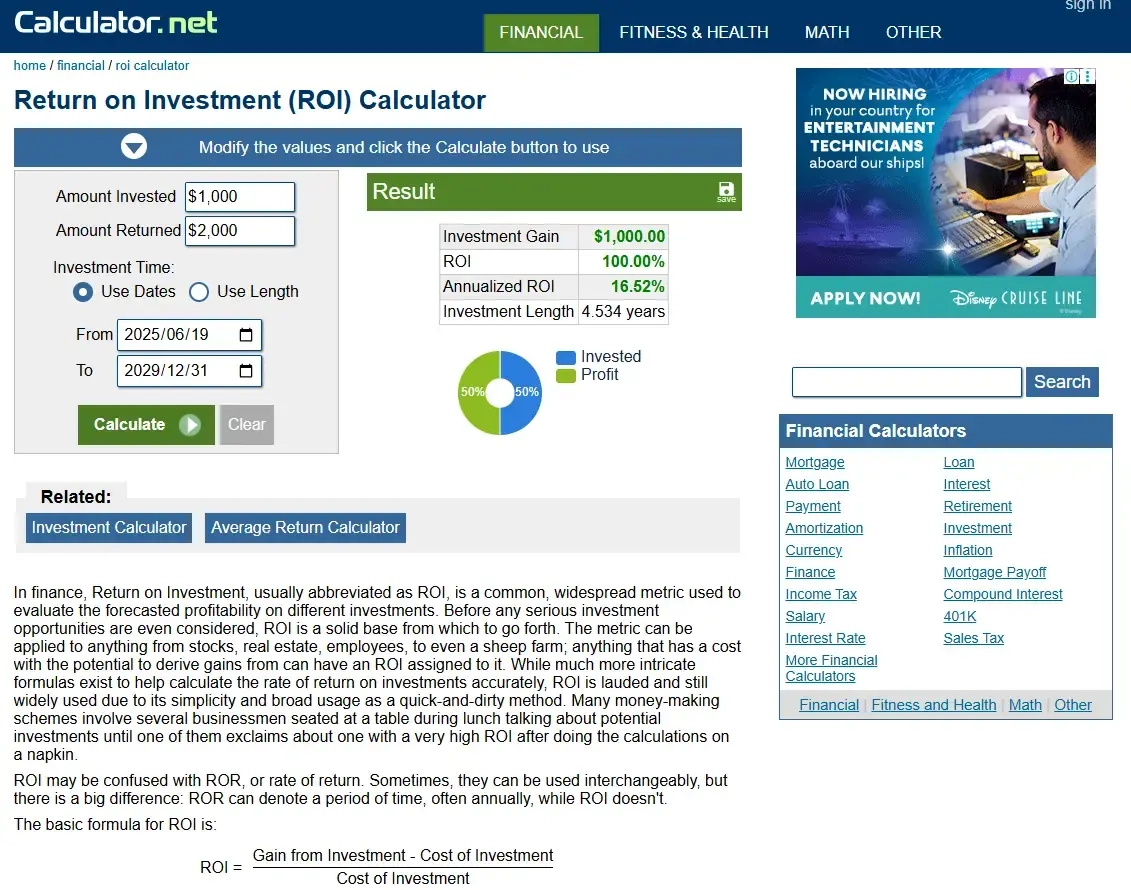
The AI Search Optimization Playbook: Top Strategies to Rank in AI-Powered Search Results
Artificial intelligence (AI) is disrupting not only how we work, write, and market but also how people search for information.
In fact, a recent survey found that nearly 80% of users prefer AI-generated answers over traditional search results for certain queries, especially when speed and clarity matter most.
That shift has huge implications for search engine optimization (SEO). Instead of serving 10 blue links on a page of search results, AI-powered tools like Google’s SGE, Perplexity, and ChatGPT aim to understand intent and deliver the best answer instantly.
That means if your content isn’t easy for AI to find, understand, and trust, you could be invisible in this new search landscape.
So, how do you adapt?
In this article, we’ll break down what AI search is, how it differs from traditional SEO, and some practical strategies you can use to make sure you’re visible in AI overviews and summaries.
What Is AI Search and Why Is It Important to Rank?
AI search is one of the biggest shifts we’ve seen to date in how users find and consume information online.
Instead of simply retrieving and listing pages in search engine results, AI search tools aim to understand user intent and generate meaningful, contextual answers based on what they find across the web.
For example, Google’s AI Overviews now appear in 47% of all search results, occupying nearly half the screen on mobile devices, which is pushing traditional listings further down the page, meaning fewer people click on them.
But before we unpack how to optimize for the evolving search landscape, let’s step back and look at how AI search compares to traditional search and how that impacts your SEO strategy.
🔎 Traditional search vs. AI-powered search
Traditional search engines like Google have always relied on a keyword-based model. Their job is to match the words in a query to relevant pages in a massive index, rank those pages based on relevance and authority, and return a list of clickable links.
In contrast, the AI model delivers information directly to the user. The experience is more like asking a well-informed assistant than combing through a list of sources.
These AI tools pull data from the web, interpret it in real-time, and present what they find in a more human-like, natural format.
Approximately 60% of searches now end with no clicks. In other words, with AI search engines, users usually get their answers without ever clicking through to a website. That’s a big deal for brands that rely on organic traffic.
🔎 Traditional SEO vs. AI search optimization
The way things are evolving means that we need to shift how we approach optimization.
Traditional SEO has always focused on ranking well in search engine results pages (SERPs) by prioritizing things like keyword targeting, content quality, backlinks, and technical website health.
AI search optimization, on the other hand, is about earning visibility in AI-generated answers, summaries, and overviews.
Ranking high in search results is still foundational (more on that soon), but AI also prioritizes signals like authority, clarity, and structure.
One in 10 Americans now uses generative AI as their primary search tool. So, it’s not just about getting seen. It’s about being selected as the most trustworthy and relevant source for someone’s question.
Optimizing for AI-powered search engines means making content easy for large language models (LLMs) to understand and confidently cite without losing its appeal to human readers.
10 AI Search Optimization Strategies to Help You Appear In Overviews and Summaries
Now that you know how this evolving AI search landscape works and why it’s important to pay attention to, let’s unpack some of the strategies that can help you rank in things like AI overviews and summaries:
1. Get to know how AI search algorithms work
Understanding how AI search works is super essential if you want your content to show up in AI-generated results. Let’s have a look at each step of how AI algorithms work:
Step 1: Natural language understanding
AI search starts by understanding the searcher’s query in a more human way. Rather than matching keywords one-to-one like traditional search, AI tools use natural language processing (NLP) to figure out what the user is really asking.
For example, if someone searches “How do I get my website to show up in AI search results”, a traditional search engine like Google will look for web pages that closely match the phrase, prioritizing keyword relevance, backlinks, and other ranking factors. It also considers intent, but largely within a structured framework tied to the query’s wording and context.
An AI search engine, on the other hand, goes several steps further. Instead of just matching keywords, it’ll interpret the deeper intent behind the question, understanding that the user is looking for a practical, step-by-step strategy or expert guidance.
Step 2: Retrieval-augmented generation (RAG)
Once the AI understands the user’s intent, it doesn’t immediately deliver an answer. Instead, it sends the query to a real-time search engine (yes, often still Google or Bing) to gather the most relevant content, which is called retrieval.
This is why search rankings are still important in the AI search landscape. If you aren’t ranking well in traditional search results, AI tools won’t find your pages.
Next, the AI uses what it finds to generate a response by summarizing, rewriting, or rephrasing the information in its own words.
This two-part process is known as retrieval-augmented generation (RAG). It ensures that the AI’s answers are both current (because they’re based on live data) and coherent (because the AI rephrases things to make them digestible).
Step 3: Answer assembly and citation
Here’s where it gets especially interesting: AI doesn’t always quote your content directly or send readers to your site. Instead, it weaves together bits of information from multiple sources and presents a single, conversational answer.
Some platforms, like Perplexity and Google’s AI Overviews, will include citations so readers can check the original source. Others might not be as transparent.
Either way, if you want your content to be featured, cited, or even referenced in the AI’s output, it needs to be:
Visible in traditional search results.
Clear, trustworthy, and easy to extract.
Aligned with the query’s intent.
➡️ Why this matters for SEO
As mentioned above, AI search still depends on traditional search signals to surface the best content.
This means that if your page doesn’t rank well in organic search, it’s unlikely that AI systems will find it during the retrieval phase.
That means your content won’t even make it into the AI’s decision-making process, let alone get featured in its generated answer.
In other words, ranking well is still your golden ticket. But to make it into Google AI overviews, ChatGPT results, and Perplexity citations, your content needs to be written in a certain way, which leads us to our next point.
2. Write content that both people and AI can understand
Writing for humans? You’ve probably got that down. Writing for AI? That’s where things get interesting, especially when the AI in question is a language model trained to mimic human communication.
To rank in AI-powered experiences, your content needs to satisfy real human readers and be easily digestible by machine-learning (ML) models. In other words, it needs to be clear, context-rich, and semantically relevant.
So, what does that actually look like in practice? Let’s break it down:
➡️ What does it mean to write for AI and humans?
Traditional SEO often revolved around keyword density, headers stuffed with phrases, and aiming for relevance and authority. But AI search systems don’t just scan for keywords; they interpret your content.
This means they’re not just assessing what a page mentions; they’re asking if the content actually explains a topic in a useful way.
AI tools use the NLP discussed above to understand meaning, relevance, and context. So if your content is vague, repetitive, or too fluffy, it’s going to be ignored by both AI and humans.
On the flip side, content that is clear, well-structured, and full of useful insights should be your goal.
➡️ How should this content be written?
If you want to show up in AI-generated answers, you need to think of your content as something an AI would want to quote. This means it should be:
Concise but informative: Make sure you don’t ramble. Get to the point quickly, especially at the start of each section or paragraph. AI tools like pulling the first few sentences from content when it clearly answers a question.
Rich in context: Provide definitions, explain relationships between ideas, and clarify ambiguous terms. Imagine you’re explaining the topic to an intelligent beginner. This means no jargon overload, but no dumbing down your content either.
Intent-aligned: Know what the searcher really wants when they type in a query. Are they asking for a definition, a step-by-step guide, or a product recommendation? Your content should match that need, not just the keywords.
Naturally written: It’s important to write like a human. AI tools favor conversational, easy-to-read writing because they mirror how people ask questions. If your content sounds robotic, AI models are less likely to include it in their outputs.
ℹ️ Tips to make your content more AI and human-friendly
Here’s a quick checklist to make super sure that your content is on the right track:
Use question-based headings: H2 headings like “How does this [thing] work?” or “What is [term]?” signal to both AI and readers that you’re about to deliver an answer.
This article uses a question-based article title (also known as an H1 heading) and question-based headings throughout the piece:

Front-load the answer: Put the main idea in the first sentence of a paragraph, then expand. AI search tools often quote just the first few lines of the content they find.
In the article below, the answer to the main question of the blog post appears at the start. This could help the article be cited by AI overview and summaries:

Avoid over-optimizing: Yes, keyword research and targeting still matter, but not at the expense of readability. Use keywords naturally and focus more on covering the topic comprehensively.
Add examples: Real-world examples help clarify ideas, make your content more useful to readers, and more quotable for AI.
This blog post by Hubspot uses real-world examples throughout the piece to help illustrate the points being made:

Use plain language: This involves using short sentences, simple words, and a clear flow. If the reader doesn’t understand what you mean, AI probably won’t get it either.
Target long-tail queries: AI tools respond to very specific questions. Writing content that answers long-tail or niche queries increases your chances of being featured.
This article targets a long-tail keyword (what can cause a bump on the back of the head?) comprehensively, potentially improving its chances of being cited in AI search results:

3. Use a clear, logical content structure
No one enjoys reading long walls of text. This is true for both AI and human readers. If you want AI engines to rank your content, you need to serve it in a way that’s neat, organized, and easy to digest.
➡️ What does this mean?
At its core, content structure is all about how your information is arranged. It’s the difference between a well-laid-out guide and a jumbled mess of data.
A well-structured piece of content:
Uses structured data markup.
Follows a logical flow from point A to point B.
Uses headings and subheadings to break up ideas.
Incorporates lists, bullet points, and short paragraphs for scannability.
Leads with an answer and then builds on it.
Guides the reader effortlessly through the topic.
ℹ️ Why structure matters for AI search
AI-powered search engines don’t just scan your content; they analyze its hierarchy. The way you organize your ideas can be the difference between getting featured in an AI-generated answer or getting ignored completely. Here’s why structure plays such a big role:
Structure helps AI understand what’s important: LLMs like hierarchy. When you use proper headings and place key information near the top of your page, you’re giving AI clear signals about what each section is about.
It improves answer extraction: AI search tools often quote a single paragraph, sentence, or list. A clear structure increases the likelihood that your content will be “snippetable", meaning it’s short, self-contained, and easy to repurpose.
It boosts the user experience (UX): Structured content keeps readers on your pages longer, reduces bounce rates, and increases engagement. These are all positive signals for both traditional SEO and AI-driven search.
4. Earn real-world authority with backlinks
Once you’ve nailed your content creation, it’s time to earn backlinks to it. No matter how good your writing is, AI search engines still rely heavily on traditional authority signals to decide which sources to trust. Backlinks can be tricky to earn, so you may want to work with a link-building agency to get this right.
➡️ What are backlinks?
A backlink is simply a link from another website to your site. If someone writes a blog post and links to your guide on “local SEO tips”, that’s a backlink.
Search engines view backlinks as votes of confidence. The higher the quality of the sites that link to you, the more trustworthy and authoritative your website content appears.
➡️ Why backlinks matter for AI platforms
As we said earlier, AI search still depends on traditional rankings to find content worth featuring. Most AI search engines pull from the top-ranking Google search results during their retrieval process.
If your content doesn’t rank well enough in search results, it won’t appear in AI-driven search results either. And to rank well, especially in competitive spaces, you need backlinks.
In fact, the top result on Google has, on average, 3.8 times more backlinks than positions two to 10.
But it’s not just about the number of backlinks you build. The quality of your backlinks matters now more than ever. AI models are designed to find the most trustworthy sources, so links from respected, relevant websites are far more valuable than dozens of random ones.
ℹ️ Ways to earn backlinks
Building authority through backlinks doesn’t have to be difficult. Here are a few proven strategies that still work in the AI-driven search landscape:
Broken link building: Use tools like Ahrefs or Screaming Frog to find broken outbound links on industry blogs or resource pages. If a dead link points to a topic you’ve already covered, reach out and suggest your content as a replacement. Website owners are often happy to fix broken links, especially if you’ve saved them time and effort.
Guest blogging: Writing posts for reputable sites in your niche is one of the most reliable ways to earn contextual backlinks. You could target industry blogs or media sites and offer original, high-value content tailored to their audience. Include a natural backlink to your relevant content within the post or your author bio.
This guest post about finding freelance clients includes a backlink to the author’s website, which is about her professional content writing services:

Create link-worthy content: Yes, content quality alone isn’t enough. But creating content designed to earn links, also known as linkable assets, gives you a major edge. Think original research, expert roundups, how-to-guides, and free tools.
This free ROI calculator provides value to users by making it easy to calculate what is often a complex formula. The tool has earned almost 500 backlinks as a result and may be cited by AI as it covers the formula in detail:

5. Add E-E-A-T signals
Google uses the Experience, Expertise, Authority, and Trustworthiness (E-E-A-T) framework to evaluate content quality. Research has found more than 80 actionable signals that impact how the E-E-A-T framework evaluates content.
This isn’t unique to Google anymore. As AI search tools aim to deliver the most helpful and accurate answers, they rely on similar trust signals to decide which content to cite or summarize.
➡️ Why E-E-A-T matters in AI search
AI models don’t think like humans, but they do try to mimic human judgment. When surfacing content in tools like Google’s AI Overviews or Perplexity, they want to be sure they’re pulling from credible, well-informed sources.
If your site clearly shows that knowledgeable people with real-world experience run it, you’re far more likely to be featured in an AI-generated answer.
➡️ How to add E-E-A-T signals to your site
Here are some quick wins for weaving E-E-A-T into your content:
Show first-hand experience: Include personal insights, case studies, or real examples to demonstrate that your advice isn’t just copied and pasted from elsewhere. This is especially powerful for Your Money or Your Life (YMYL) topics like finance, health, and legal content.
Highlight author credentials: Add author bios with relevant qualifications, experience, or industry roles. Link to their LinkedIn profiles or other work to back it up.
WebMD includes E-E-A-T signals in their content by mentioning which healthcare provider has medically reviewed their articles and a clickable author name to view the writer’s credentials:

Build trust with transparency: Include cited sources, privacy policies, and clear contact information. These small touches show users and AI that your site is run by real people.
Use schema markup: Structured data like author, organization, and article schema helps search engines (and AI tools) understand the context of your content more accurately. Sites using schema markup are approximately 40% more likely to rank in the top results.
6. Minimize sales language in informational content
If your content sounds like an advert, AI search tools will probably ignore it. AI-powered systems are designed to surface genuinely helpful, unbiased information. This is especially true for top-of-funnel, question-based user queries.
If your page reads like a sales pitch wrapped in a blog post, it’s unlikely to get featured.
7. Nail the technical SEO basics for AI crawling
AI tools still rely on crawling and indexing, just like traditional search engines. This means your content needs to be accessible and discoverable, which technical SEO helps you achieve.
➡️ Why technical SEO still matters in the AI era
AI models pull from live search results and web indexes, often using traditional crawlers as a starting point. If your content can’t be crawled or indexed, it might not get picked up by AI systems.
ℹ️ Key technical SEO basics to get right
Nailing these core elements of technical SEO can make a big difference:
Submit an XML sitemap, avoid unnecessary robots.txt blocks, and minimize reliance on JavaScript for loading content to make your site crawlable.
Improve page speed by compressing images, enabling lazy loading, reducing CSS, and using a faster host.
Ensure mobile friendliness by ensuring your website’s design and layout automatically adjusts to different screen sizes.
Fix indexing issues by using Google Search Console to identify noindex tags, crawl errors, broken redirects, or duplicate content.
8. Use AI and automation to supercharge optimization
We’ve talked about how to optimize your content for AI, but what if you could leverage AI to optimize faster, better, and at scale?
One survey found that 78% of respondents said their organizations now use AI for at least one business function.
AI and automation tools aren’t just changing how people search. They’re also completely transforming how SEOs and marketers create, refine, and improve content. When used strategically, these tools can give your AI search visibility a serious boost.
Here are some ways you can use AI tools to boost your SEO optimization and AI visibility:
ℹ️ Use ChatGPT for ideation and drafting
If you need a starting point for a blog post, meta description, or FAQ block, tools like ChatGPT, Claude, or Gemini can help you generate them. They can also help with drafts, rewrite content for clarity, or brainstorm long-tail keyword ideas.
ℹ️ Use Surfer SEO or Clearscope for content optimization
Surfer SEO and Clearscope are tools that analyze the top-ranking pages for your target keywords and tell you:
What terms and topics you should include.
How long your content should be.
How well you’re covering the topic compared to competitors.
ℹ️ Use automaton to monitor rankings and visibility
SEO tools like Ahrefs and SEMrush can help you monitor traditional rankings. But SEO platforms are also adding AI SERP tracking, which can help you understand whether your content is appearing in AI overviews.
ℹ️ Automate internal linking and on-page SEO
Tools like LinkWhisper or Frase can help you identify internal link opportunities, optimize anchor text, and fix on-page optimization gaps.
9. Stay agile as AI search keeps evolving
AI search isn’t standing still, and neither should you. Search engines are constantly tweaking how their AI systems retrieve, rank, and summarize content. What works today might shift over the next quarter, so the key to long-term visibility is remaining agile.
You can stay ahead by following these steps:
Monitor AI search results: Regularly check how your content appears in Google’s AI Overviews, Perplexity, and ChatGPT’s browsing mode.
Track your competitors: See who’s being featured in AI-generated answers and why.
Test, tweak, and restest: Adjust formatting, language, or structure and track what sticks.
Stay informed: Follow updates from Google, OpenAI, and other AI search platforms so you’re not caught off guard by big changes.
Not Sure Where to Start with Backlinks for AI Search? We Can Help
You now know how AI search is reshaping SEO, including how content is discovered and pulled into conversational results.
There’s so much that’s changing, but one thing remains the same: backlinks are still essential. In fact, they’re more important than ever.
At LinkBuilder, we help growth-focused brands earn genuine, high-authority backlinks that make a difference. Not just for today’s SEO, but for the fast-evolving world of AI search.
From link prospecting and outreach to strategy and reporting, we make sure your content gets the authority it needs to stand out.
Feel free to get in touch with us today to start building backlinks that make a difference in AI-driven search results.

